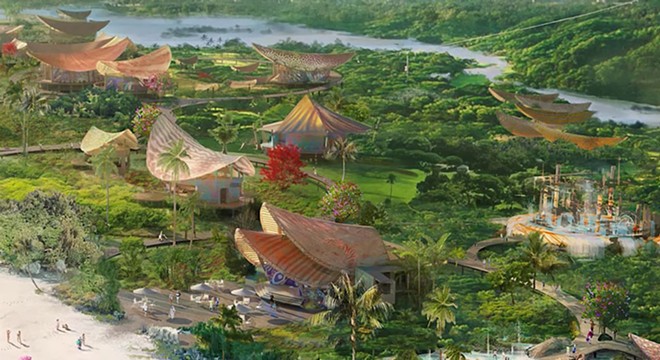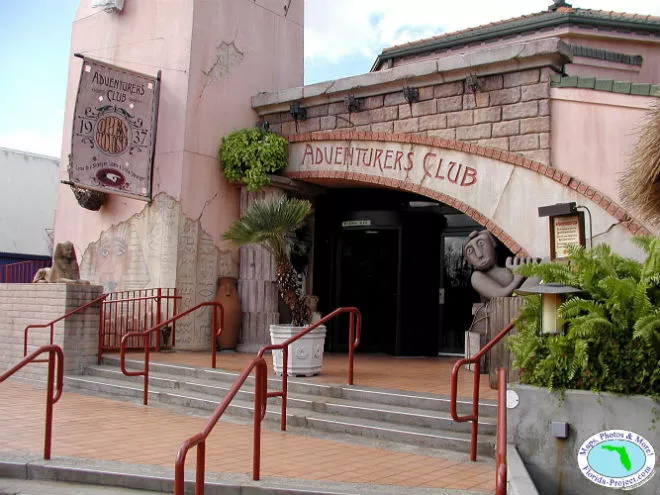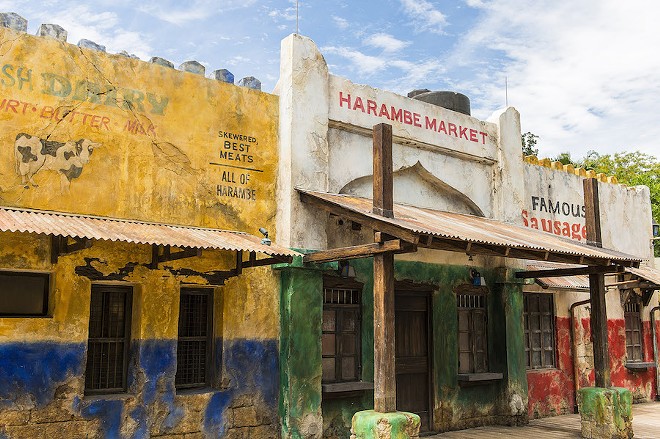Legendary Imagineer Joe Rohde is leaving Disney. His influence forever changed themed entertainment
After a four-decade career in Walt Disney Imagineering, the iconic Joe Rohde has confirmed he will be retiring in January.
The announcement on Rohde’s personal Instagram account of his retirement comes after weeks of speculation that he was included in the recent mass layoffs, which did include hundreds of Disney Imagineers. At the time, a person familiar with the downsizing stated Rohde was not one of them. But just weeks later, Rohde confirmed that he would be leaving Disney.
While Rohde has been silent on the reasoning behind his timing, he has been clear that it was his choice. The timing of his departure may even have helped assure that lower-ranking Imagineers were able to keep their jobs, thanks to his position being vacated.
Currently, Rohde is overseeing both the Marvel expansion within Disney parks and the upcoming private Disney Cruise Line port, Lighthouse Point.
Rohde’s interaction with the Marvel franchises was the universally lauded Guardians of the Galaxy – Mission: Breakout! redo of California Adventure’s Tower of Terror while he served as the global creative leadership for Marvel within Imagineering.
At Disney California Adventure, where Rohde oversaw the Mission: Breakout Marvel ride, a multi-phase Marvel Campus is wrapping up its second phase, which will include a new Spider-Man dark ride, multiple meet-and-greets, and a new quick-service restaurant. Rohde’s attraction will remain one of the land’s signature attractions.
Mission: Breakout! laid the groundwork for this next generation of Marvel attractions, that the next generation of Imagineers are now moving forward with. Mission: Breakout, like more recent Marvel projects overseen by Scot Drake, Imagineering’s Creative Executive for the Marvel Global Portfolio, acknowledges its real-world physical location. This blurring of the line between real and fictional is something Rohde has done since its earliest days at Imagineering.
This gray area is celebrated nowhere better than at Disney Vacation Club’s Aulani resort on Hawai’i’s island of Oahu. Here Rohde was able to harken back to his childhood, much of which was spent in Hawaii thanks to his father, who worked in the budding film industry there.
Using folk stories he grew up hearing and new ones told to him by indigenous people, Rohde designed Aulani as a celebration of indigenous folklore while using local artwork. In the process, Disney became one of the largest collectors of original Hawaiian artwork. His plans for Lighthouse Point in the Bahamas call for the same collaborative local storytelling design.
In an Instagram post reacting to the news of his departure, Bob Weis, president of Walt Disney Imagineering, praised Rohde and his ability to respect indigenous while introducing those stories in new ways and to new audiences.
“Joe has committed 40 years to bringing dynamic, inventive, and diverse projects to Disney parks. While he is widely renowned for his unmatched expertise across numerous creative disciplines, he’s also an expert in every facet of leading and managing our projects, from setting the vision to feasibility, design and execution. His unyielding commitment to excellence across all aspects of projects, and his demand for authenticity and including diverse, indigenous cultures in design and production, are hallmarks of his projects and what differentiate them from all others.”
As with Marvel, Lighthouse Point is now at a place where a new generation of Imagineers can take the reins on the journey so meticulously laid out by Rohde. The same is true for his magnum opus, Disney’s Animal Kingdom.
Few parks are so closely aligned with the visionary that designed them. Rohde had begun at Walt Disney Imagineering (WDI) after teaching set design at Chaminade College Preparatory, his alma mater. He had humble beginnings at WDI, working on the pyramid seen inside the Mexico Pavilion at Epcot. He also had a small role in the Norway pavilion and the Captain EO attraction.
His true talent came out a few years later when, under Christopher Carradine, the vice president for Design Development at Disney at the time, he was tasked with creating a nightclub themed to the explorers that filled newsreels in the early 20th century. Rohde and fellow Imagineer Roger Cox came up with a quirky, multi-room club known as the Adventurers Club.
The nightclub opened to rave reviews, and within months Rohde had much bigger ambitions. With Pleasure Island (Disney’s answer to Church Street Station) and MGM Studios (Disney’s response to Universal Studios Florida) both now open, Eisner had his sights set on what he viewed as Disney World’s other big competitor, the Busch family of parks.
Rohde knew that could bring something to Eisner’s new animal-focused park that few others could. After two unsuccessful attempts to convince Eisner and other top executives that Rohde was the person they should pick for the job, he made an impression that they wouldn’t soon forget. The first two meetings involved granular details regarding Rohde’s vision for the park, which didn’t seem to capture the board, so Rohde decided to take a different approach for the third.
In a nod back to Disney’s animation techniques from the earliest days, Rohde arranged for a live tiger to join him during his presentation. The up-close encounter with the Bengal tiger was enough to convince Eisner that live animals would work in the park, and Rohde was the person to lead the effort.
Rohde quickly turned to experts in animal behavior to help him design a live animal park unlike anything seen before. Leading experts such as Dr. Jane Goodall worked directly with Rohde, who used the opportunity to travel the world to understand better and therefore better represent the multifaceted realities that are the inspiration for the park. Since opening, the Animal Kingdom has revolutionized public animal facilities by presenting animals in a more natural habitat with a keen edutainment style with a direct linage back to both Animal Kingdom and its predecessor, Epcot.
Now, more than 20 years after opening, the Animal Kingdom is the third most visited theme park in the nation, with only the Magic Kingdom and Disneyland welcoming more visitors. The park is the physical manifestation of Rohde’s mantra that everything must have a reason, a story, for being there.
Meanwhile, the Adventurers Club has inspired Disney’s fictional Society of Adventurers and Explorers (S.E.A.), now referenced in numerous Disney attractions. One of those attractions, Tokyo DisneySea’s Tower of Terror, includes a character, Harrison Hightower III, drawn in Rohde’s likeness. Even that attraction has a message, one of respecting local cultures. For Disney, the S.E.A. provides a new well of storytelling to draw from.
To Rohde, our perception of reality itself is grounded in storytelling. While speaking at a conference in 2011, he said, “What is happening to us at any moment in our life is that we are telling ourselves a story — we’re translating everything that happens into story as it happens in front of us.”
His insistence on authenticity has been viewed as a reaction to Disneyland’s complete artificiality, which fueled academia’s intellectual criticisms of Disney and themed entertainment. Instead, Rohde looked to find an acceptable level of fantasy that didn’t ignore the hard facts of reality, such as poverty, deforestation and wildlife poaching, but that bridged the gap between fantasy and reality in such a way that these hard stories could be told, even in a theme park setting, in ways that resonate via universally understood experiences.
Not since Walt Disney himself has a visionary had such a dramatic impact on WDI and themed entertainment design at large. But not to worry; even in his retirement announcement, Rohde made it clear that he plans to continue his lifelong exploration of storytelling.
“I started at Disney as a child, and I learned almost all my life lessons there, developed my confidence, recognized my skills and weaknesses, and went on to work with both… and do what could be done. I could stay forever, but that is like remaining in another kind of womb. I want to see what a grown man might be able to do on his own.” He continued, “But I will still be here. And I will still be thinking about things, and doing things, and talking about things… Because that’s kind of what I do.”




